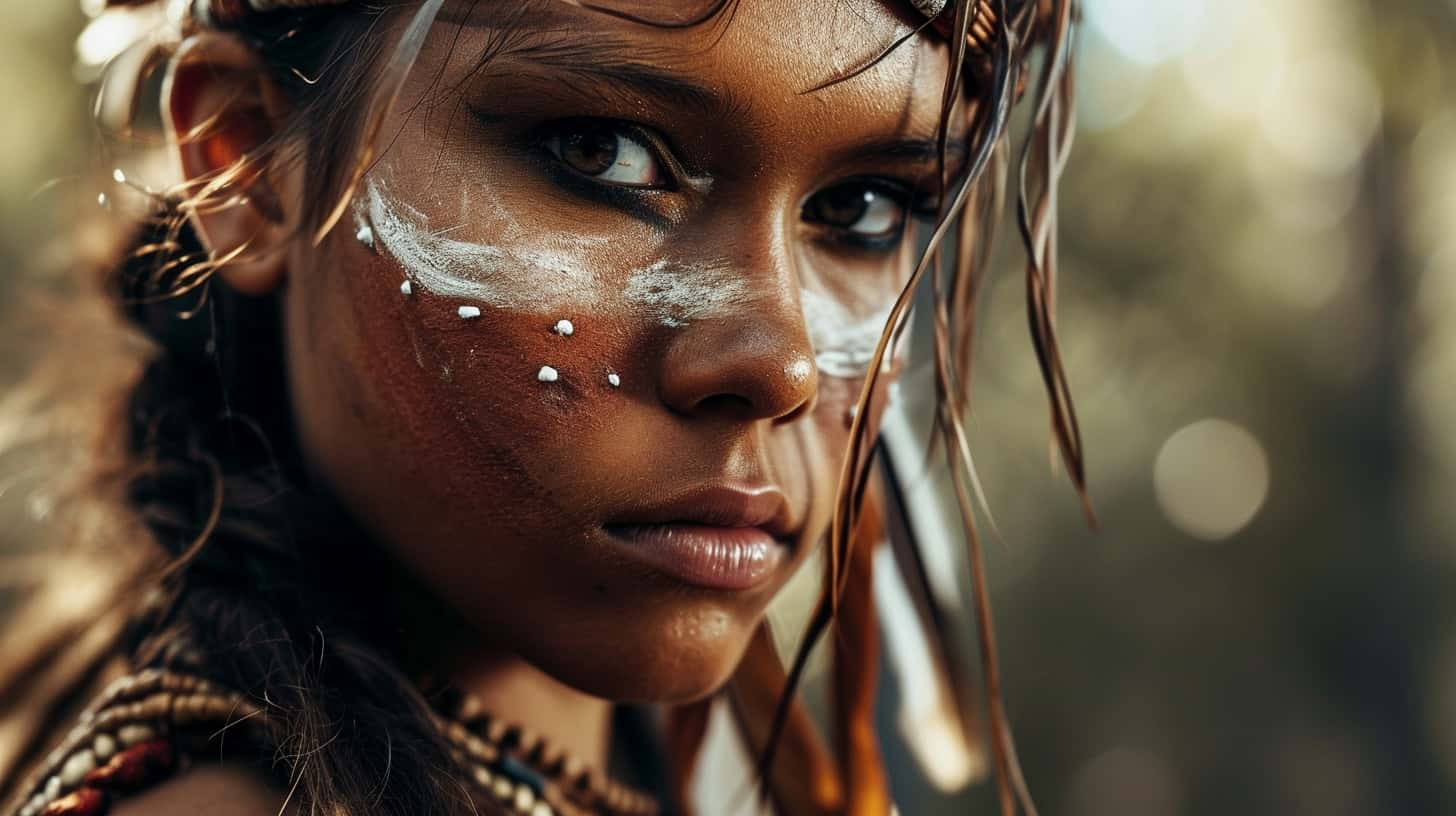Are you interested in delving into the intriguing world of Indigenous literature? This genre encompasses a diverse range of storytelling traditions that not only preserve a rich cultural heritage but also challenge mainstream narratives. By immersing ourselves in these works, we can gain a profound insight into the experiences and perspectives of Indigenous peoples. What sets Indigenous literature apart is its skillful blending of history, tradition, and contemporary issues, offering a unique worldview. We welcome you to join us on this exploration of literature, a journey that guarantees not only enjoyment but also enlightenment and inspiration. Let’s embark on an adventure into the heart of some of the most authentic and profound Indigenous novels.
Celebrating Native American Heritage Through Novels
Insightful Perspectives
When we explore the best indigenous novels, we gain profound insights into the history, struggles, and triumphs of Native American communities. These narratives offer a window into the unique experiences and traditions that have shaped Indigenous peoples’ lives for centuries. Through these stories, we can immerse ourselves in the rich cultural heritage that is often overlooked in mainstream literature.

Diving into novels such as “There There” by Tommy Orange or “Ceremony” by Leslie Marmon Silko allows us to witness the complexities of Native American identity and history. For example, “Ceremony” delves deeply into the challenges faced by WWII veteran Tayo as he grapples with his Laguna Pueblo roots while battling post-traumatic stress disorder. By following Tayo’s journey, we navigate through themes of healing, tradition, and spirituality that are deeply ingrained in Indigenous cultures.
Exploring these narratives broadens our understanding of diverse perspectives within Native American communities. We encounter characters who navigate modern-day challenges while preserving their ancestral customs and beliefs. This exposure fosters empathy and respect for a culture that has endured significant adversity throughout history.
Fostering Appreciation
By engaging with best indigenous novels, we actively contribute to fostering greater appreciation and respect for Native American heritage. These literary works provide an avenue for amplifying voices that have been marginalized or misrepresented in traditional Western literature. As readers, our immersion in these narratives enables us to recognize and celebrate the resilience and strength exhibited by Indigenous individuals across generations.
For instance, Louise Erdrich’s novel “The Round House” sheds light on issues such as jurisdictional complexities faced by tribal communities when seeking justice for crimes committed against them. Through this gripping narrative, readers confront systemic injustices while gaining a deeper awareness of legal disparities affecting Native Americans.
Moreover, embracing these stories encourages us to advocate for broader recognition of Indigenous authors within literary circles. By supporting their work through reading clubs or social media discussions, we amplify their impact on contemporary literature while advocating for more inclusive representation within publishing industries.
Notable Works by Indigenous Authors
Diverse Narratives
Exploring the best indigenous novels allows us to immerse ourselves in a world of diverse narratives, each offering a unique perspective on life, culture, and history. These stories provide insight into the experiences and wisdom of Indigenous communities, shedding light on their struggles, triumphs, and heritage. For example, Sherman Alexie’s “The Absolutely True Diary of a Part-Time Indian” delves into the challenges faced by a young Native American boy as he navigates between two different worlds: his reservation and an all-white school.
Indigenous authors infuse their works with cultural richness that captivates readers while educating them about traditions and customs. By reading these novels, we gain a deeper understanding of the complexities of Indigenous life and are able to appreciate the beauty inherent in their cultures. Louise Erdrich’s “Love Medicine” is an excellent example of this; through her vivid storytelling, she paints a compelling picture of Chippewa life in North Dakota.

Broadening Perspectives
Engaging with notable works by Indigenous authors broadens our perspectives by exposing us to themes such as resilience, identity struggles, spirituality, and community bonds. These novels offer valuable lessons that resonate across different cultures while highlighting the importance of preserving one’s heritage amidst adversity. Tommy Orange’s “There There” masterfully weaves together multiple characters’ stories to portray contemporary urban Native American life – providing readers with an eye-opening portrayal of modern Indigenous experiences.
Moreover, these novels challenge stereotypes and misconceptions about Indigenous peoples by presenting authentic portrayals that humanize their communities. They allow us to move beyond preconceived notions shaped by mainstream media or historical inaccuracies towards genuine empathy for their plights. Leslie Marmon Silko’s “Ceremony,” for instance, showcases how traditional Laguna Pueblo beliefs intersect with post-war trauma – dispelling myths about homogeneity within Indigenous cultures.
Award-Winning Fiction by Native American Writers
Literary Excellence
Reading award-winning fiction by Native American writers allows us to experience the literary excellence and cultural significance of their storytelling. These novels have been recognized with prestigious awards, showcasing the talent and creativity of indigenous authors. The accolades received by these writers highlight the depth, emotion, and impact of their narratives on readers worldwide.
Delving into these thought-provoking novels provides an opportunity to explore diverse perspectives, traditions, and experiences that are deeply rooted in indigenous culture. Through their compelling storytelling, native authors offer a unique insight into historical events, contemporary issues, and timeless themes that resonate with readers on a profound level.
The recognition garnered by these novels not only celebrates the individual achievements of the authors but also elevates the representation of indigenous voices in literature. It serves as a testament to the richness and complexity of indigenous storytelling traditions while fostering greater appreciation for their contributions to global fiction.
Impactful Narratives
The award-winning fiction penned by Native American writers often delves into multifaceted themes such as identity, resilience, heritage, spirituality, and social justice. These narratives provide a powerful platform for shedding light on pressing societal issues while celebrating the strength and wisdom embedded within indigenous communities.

By immersing ourselves in these impactful narratives through acclaimed works like “Ceremony” by Leslie Marmon Silko or “Love Medicine” by Louise Erdrich, we gain valuable insights into diverse cultural landscapes while empathizing with characters facing universal struggles. This exposure fosters empathy towards different cultures while expanding our understanding of human experiences across various backgrounds.
Exploring these award-winning novels also offers an enriching educational experience that goes beyond traditional classroom teachings. Readers can gain a deeper understanding of historical events from an authentic perspective while appreciating the enduring legacy of indigenous wisdom passed down through generations via oral tradition before being captured in written form.
Exploration of Native American Culture in Indigenous Novels
A Glimpse into Culture
When we explore the best indigenous novels, we are granted a glimpse into the rich and diverse tapestry of Native American culture. These novels delve deep into traditional practices, spirituality, language, customs, and contemporary issues faced by Indigenous communities. Through these narratives, we can vividly envision the unique rituals and ceremonies that have been passed down through generations. For instance, in “There There” by Tommy Orange, readers are immersed in a portrayal of urban Native American life while also gaining insight into their cultural heritage.
The stories woven within these novels provide us with an intimate understanding of the challenges faced by Indigenous communities. We witness firsthand the struggles for identity preservation and recognition as well as the impact of historical trauma on present-day realities. This allows us to empathize with their plights and fosters a deeper appreciation for their resilience amidst adversity.
Appreciating Diversity
Exploring these indigenous novels enables us to broaden our perspectives and appreciate the diversity within Native American cultures. Each narrative presents a unique lens through which different tribes’ traditions are showcased—highlighting distinct belief systems, oral traditions, art forms, and societal structures. For example, Louise Erdrich’s “The Round House” offers a compelling exploration of Ojibwe culture while shedding light on legal jurisdiction issues facing tribal nations.
Moreover, delving into these literary works encourages us to engage critically with contemporary issues affecting Indigenous communities today—ranging from environmental conservation efforts to socio-economic disparities. By immersing ourselves in such narratives like “Ceremony” by Leslie Marmon Silko or “Love Medicine” by Louise Erdrich—we gain valuable insights that prompt discussions about social justice concerns impacting Native peoples across North America.
Insightful Memoirs by Indigenous Storytellers
Valuable Insights
Engaging with the best indigenous novels offers us valuable insights into the challenges, resilience, and triumphs within Indigenous communities. These memoirs are powerful tools for understanding the lived experiences of Indigenous people. They provide a unique window into their world, allowing us to connect on a human level and gain empathy for their experiences.
Reading these memoirs is like being invited into someone’s home and listening to their stories firsthand. We get to see life through their eyes, experiencing both the hardships they face and the moments of joy that bring light to their lives. For example, “The Absolutely True Diary of a Part-Time Indian” by Sherman Alexie provides an intimate look at Junior’s struggles as he navigates between his reservation school and an all-white high school.
Personal Accounts
Memoirs written by Indigenous storytellers offer personal accounts that shed light on their lived experiences. These stories are not just about historical events or cultural traditions; they delve deep into the emotions, thoughts, and daily lives of individuals within these communities. Through these narratives, we learn about family dynamics, traditional customs, spirituality, identity struggles, discrimination faced in modern society—topics that resonate with readers from all walks of life.
For instance,”Heart Berries” by Terese Marie Mailhot is a raw portrayal of her upbringing on Seabird Island Indian Reservation in British Columbia. Her memoir delves into her traumatic childhood memories while addressing mental illness within Native American communities.
Contemporary Voices in Indigenous Fiction and Poetry
Diverse Themes
Contemporary Indigenous novels and poetry are a treasure trove of diverse themes. They delve into the intricacies of identity, social issues, and the preservation of culture. Through these literary works, we encounter compelling narratives that shed light on the experiences and perspectives of Native peoples in today’s world.
These stories can take us on an emotional journey through the struggles, triumphs, and everyday lives of Indigenous communities. For example, “There There” by Tommy Orange offers a poignant portrayal of urban Native Americans grappling with their identities in modern society. Similarly, Leanne Betasamosake Simpson’s poetry collection “This Accident of Being Lost” presents powerful reflections on displacement and reclamation.
Exploring these themes through contemporary Indigenous literature allows us to gain insight into the challenges faced by Native individuals while also celebrating their resilience and unique cultural heritage.
Ongoing Narratives
By immersing ourselves in the best indigenous novels, we become partakers in ongoing narratives that capture the essence of modern-day Native experiences. These literary creations offer a window into the rich tapestry of Indigenous cultures, traditions, and contemporary realities. Whether it’s Leslie Marmon Silko’s “Ceremony,” which interweaves traditional Laguna Pueblo stories with post-war trauma or Cherie Dimaline’s dystopian novel “The Marrow Thieves,” highlighting environmental degradation amidst survival struggles – each work provides an avenue for understanding complex societal issues from an Indigenous perspective.
Moreover, engaging with contemporary Indigenous fiction and poetry enables us to stay connected to living histories that are often overlooked or misrepresented within mainstream discourse. It fosters empathy as we witness characters navigating generational trauma or asserting their cultural identities against oppressive forces.
Two-Spirit Literature and Its Significance
Challenging Notions
Two-Spirit literature is a treasure trove of stories that shed light on the experiences of LGBTQ+ individuals in Indigenous communities. These narratives challenge Western ideas about gender and sexuality, offering a refreshing perspective that celebrates the rich diversity within Indigenous cultures. By delving into these novels, we uncover a world where identities are not confined by binary concepts but rather celebrated in all their complexity.
These novels often depict characters who embody both masculine and feminine qualities, defying traditional gender roles. Through their journeys, we gain insight into the struggles and triumphs of Two-Spirit individuals within Indigenous societies. These stories offer us an opportunity to broaden our understanding of gender identity and sexual orientation beyond the confines of mainstream culture.
Fostering Understanding
Exploring Two-Spirit literature fosters greater understanding and inclusivity for all identities. As we immerse ourselves in these novels, we come to appreciate the unique perspectives they offer on love, relationships, and self-discovery. The themes woven into these narratives resonate with universal human experiences while also providing a lens through which to understand the specific challenges faced by Two-Spirit individuals.
Stories of Resilience and Tradition in Indigenous Communities
Resilience and Strength
Indigenous novels often depict the remarkable resilience and strength of Indigenous communities. These stories narrate the enduring spirit that has sustained these communities through historical trauma and ongoing challenges. They showcase how individuals, families, and entire communities overcome adversity with courage and determination.
Engaging with best indigenous novels allows us to immerse ourselves in narratives that highlight the unwavering perseverance of Indigenous peoples. We can witness firsthand their ability to navigate complex societal issues while preserving their cultural heritage. For example, “The Absolutely True Diary of a Part-Time Indian” by Sherman Alexie offers a poignant portrayal of resilience as it follows the protagonist’s journey to break free from systemic barriers.
Preservation of Cultural Traditions
Through these literary works, we gain insight into the importance of preserving cultural traditions within Indigenous communities. The novels provide glimpses into customs, beliefs, and practices that have been passed down through generations. They offer readers an opportunity to appreciate the richness of Indigenous cultures.
By delving into these narratives, we can understand how traditions serve as anchors for many Indigenous individuals amidst modern-day challenges. For instance, “There There” by Tommy Orange eloquently explores the complexities surrounding identity while emphasizing the significance of honoring ancestral customs.
Appreciating Tradition and Resilience
Exploring best indigenous novels enables us to develop a profound appreciation for tradition and resilience within Indigenous societies. It allows us to recognize the deep-rooted connection between storytelling, cultural heritage, and community strength.
These stories serve as powerful reminders that despite adversities faced by Indigenous peoples throughout history, their traditions endure as sources of inspiration and pride. As we engage with these narratives collectively—whether in book clubs or educational settings—we foster greater awareness about diverse experiences while celebrating the indomitable spirit found within each story.
Honoring Indigenous Peoples with Must-Read Recommendations
Diverse Representation
We are presented with a unique opportunity to honor and uplift Native voices. These novels provide an authentic glimpse into the rich cultures, traditions, and experiences of Indigenous communities. By delving into these narratives, we expand our literary horizons and gain valuable insights into the diverse perspectives that shape Indigenous identities.
Exploring best indigenous novels encourages us to diversify our literary choices while supporting Indigenous authors. We have the chance to immerse ourselves in stories that may differ from our own experiences, fostering empathy and understanding for cultures that deserve greater recognition. Through these recommendations, we actively contribute to promoting greater representation in literature, amplifying voices that have historically been marginalized.
Promoting Cultural Understanding
Engaging with must-read recommendations for Indigenous novels allows us to embark on a journey of cultural discovery. These narratives often delve into themes of resilience, intergenerational wisdom, and the enduring connection between people and their land. As readers, we have the privilege of gaining profound insights into the historical struggles and triumphs of Indigenous communities through compelling storytelling.
Conclusion
We’ve delved into the rich tapestry of Indigenous literature, uncovering the profound cultural insights and diverse narratives woven into these captivating novels. From celebrating Native American heritage to exploring contemporary voices and honoring Indigenous peoples, we’ve witnessed the resilience, traditions, and unique perspectives of these communities. It’s crucial that we continue to seek out and support Indigenous authors, amplifying their voices and stories.
Let’s embark on a journey of discovery through the pages of these compelling novels, immersing ourselves in the vibrant tapestries of Indigenous cultures and traditions. Together, let’s champion diversity in literature and embrace the transformative power of storytelling.
Frequently Asked Questions
What is Indigenous literature?
Indigenous literature encompasses writings by authors from native or indigenous communities, reflecting their cultural perspectives and experiences. These works often focus on themes such as tradition, identity, and the impact of colonization.
How can I explore Native American heritage through novels?
You can immerse yourself in Native American heritage by delving into novels written by indigenous authors that offer insights into their traditions, struggles, and triumphs. Look for acclaimed works that authentically portray the diverse experiences within these communities.
What are Two-Spirit literature and its significance?
Two-Spirit literature explores gender diversity within indigenous cultures and holds significant cultural value. It provides a platform for understanding the historical roles of individuals who embody both masculine and feminine qualities in native societies.
Where can I find must-read recommendations honoring Indigenous peoples?
To discover essential reads honoring Indigenous peoples, consider seeking out curated lists from reputable sources such as literary organizations, libraries with a focus on diverse voices, or websites dedicated to promoting indigenous literature.
Why should I read contemporary voices in Indigenous fiction and poetry?
Engaging with contemporary voices in Indigenous fiction and poetry offers a window into modern-day issues faced by native communities while showcasing the resilience, creativity, and evolving perspectives of indigenous writers today.
Nayeli is our dedicated Editor in Chief, bringing her passion for words and keen editorial eye to every piece of content we produce. With years of experience in the field, she ensures that every article and publication meets the highest standards of quality and clarity. Nayeli’s commitment to storytelling and her deep understanding of our mission make her an invaluable leader in our team.










